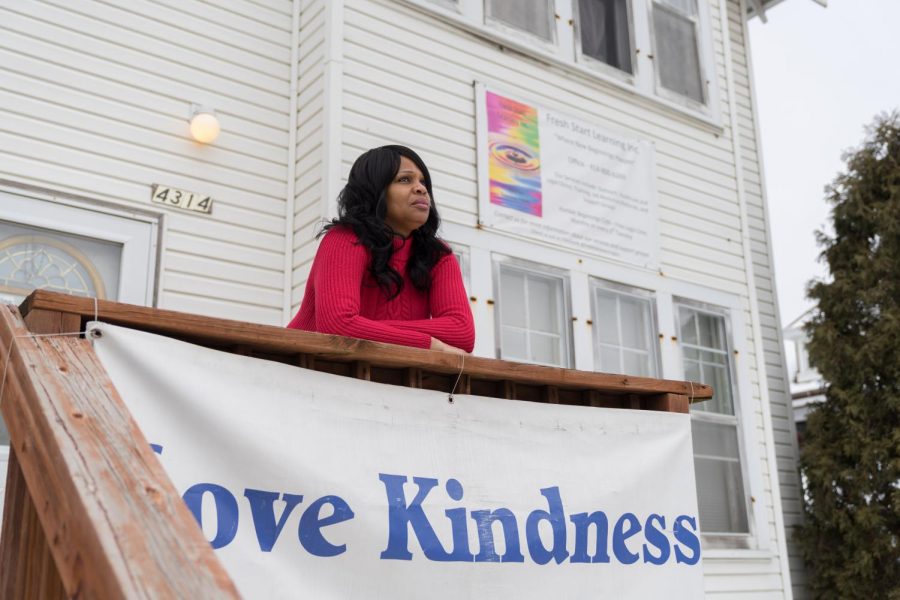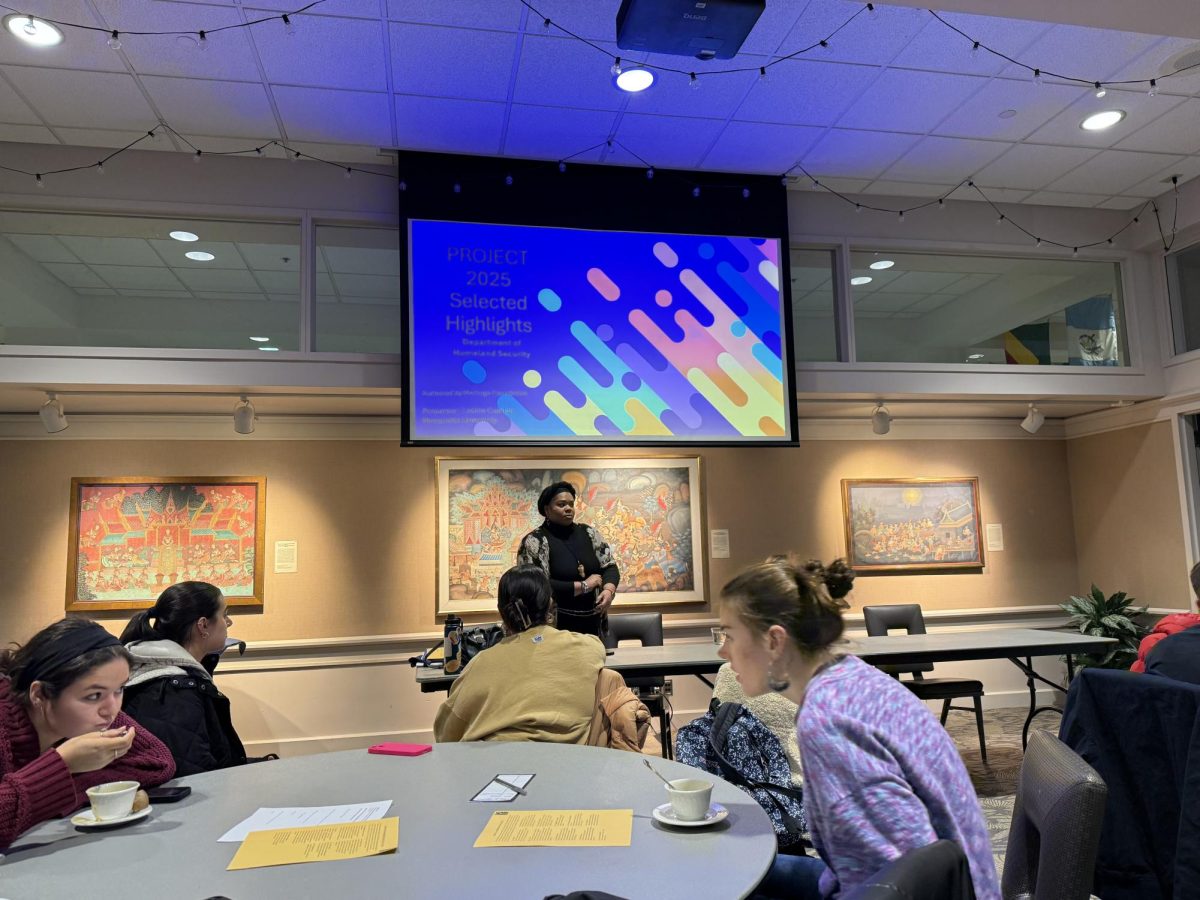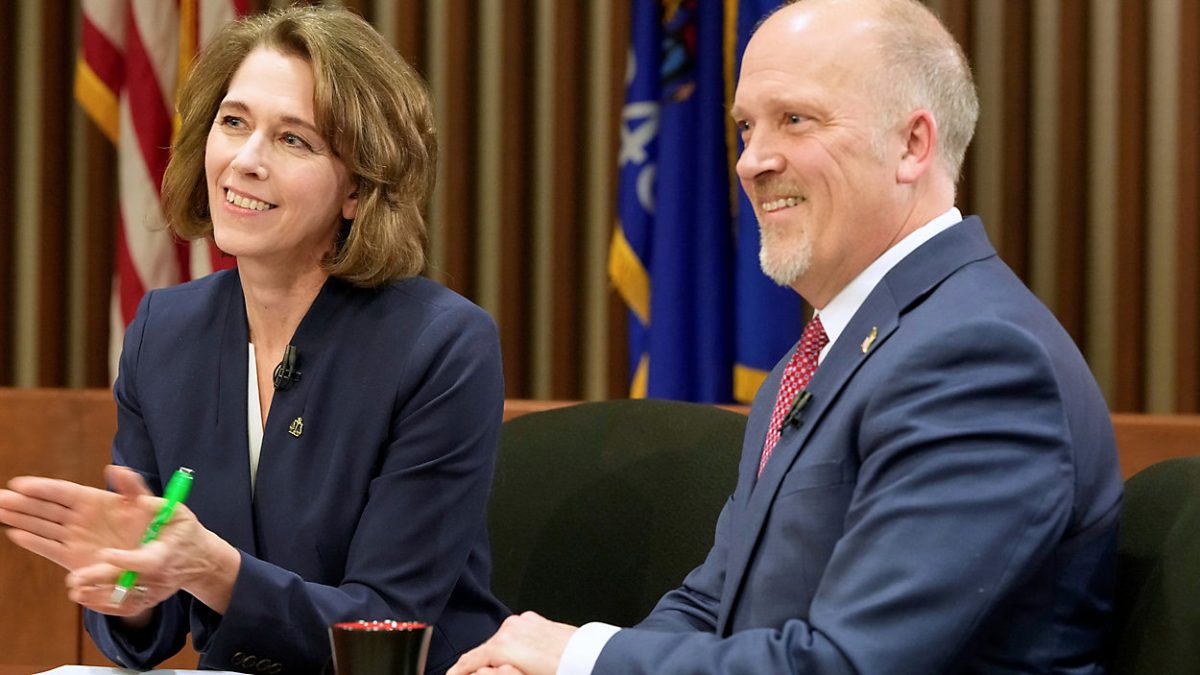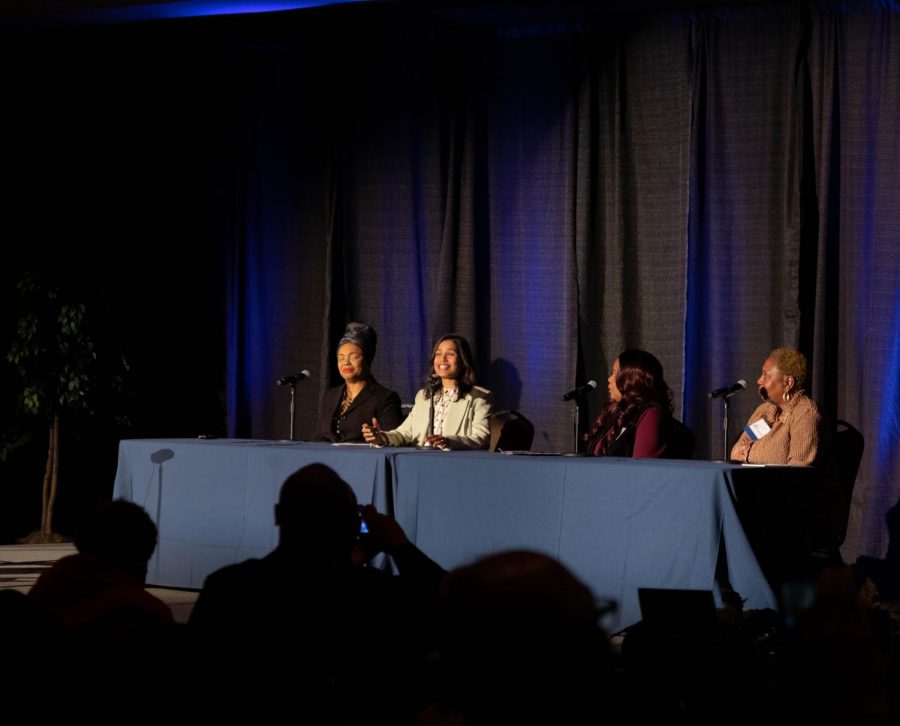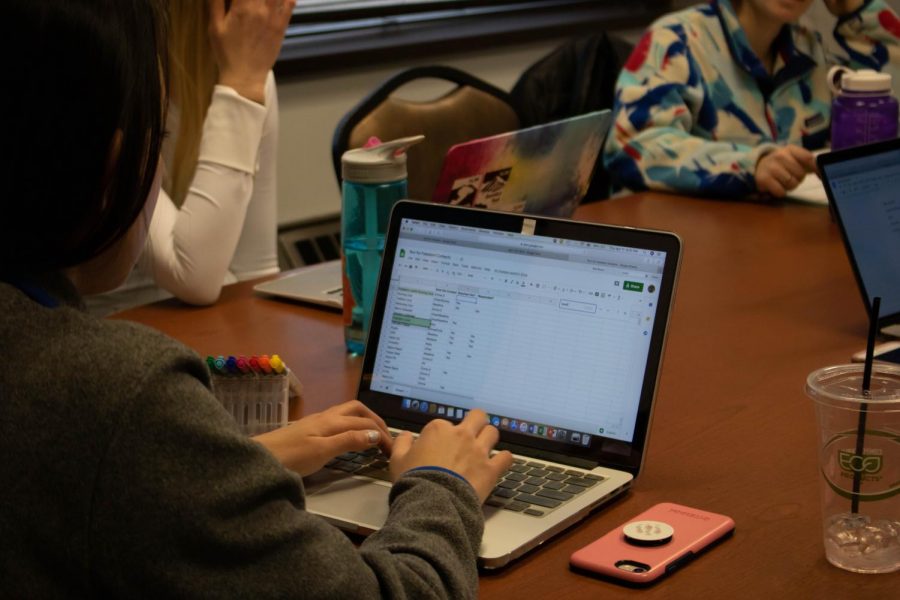“There is no cookie cutter. It can happen to anyone,” Nancy Yarbrough, founder of Fresh Start Learning, says. The organization is a nonprofit which advocates for and provides resources to victims of human trafficking.
Yarbrough was raised in a middle-class, two-person-income family. She was never forced to endure traumatic experiences inside her own home. She had the trendiest fashion and the newest toys. She did, however, lack one thing: a feeling of acceptance.
As early as her teenage years, sexual abuse began at the hands of family acquaintances and relatives. As her signs of trauma were reduced to “teenage rebellion” by her then-separated parents, Yarbrough looked to alternative sources of affirmation. At only 17 years old, still very much a child, she was lured into the sex trade.
“I just wanted somebody to appreciate and love me for who I was,” Yarbrough says. “I didn’t even know who I was.”
Now an adult, Yarbrough is able to share her experiences. She says she finds herself constantly destroying the “cookie cutter” notion that each experience can be generalized.
“To end exploitation and violence is such a personal, deeply felt call,” says Corinne Schwarz, a visiting assistant professor in the Department of Social and Cultural Sciences at Marquette University.
Schwarz felt that call when she began her research in February 2016. After receiving a National Science Foundation grant to conduct her dissertation, Schwarz drove across the Midwest to gather information about human trafficking. What she found in her 54 interviews, Schwarz says, was illuminating.
“This happens to young white women. This also happens to young women of color, undocumented women, undocumented men, men of color and LGBTQ folks,” Schwarz says.
What she and thousands of others now hope to dispel are the malignant stereotypes of human trafficking by collaborating with other researchers, nonprofits and law enforcement. One must first achieve a basic understanding of what sex trafficking is, Schwarz says. Differences in definitions can lead to disunity, even among academic and activist communities.
The Wisconsin State Legislature defines human trafficking as “recruiting, enticing, harboring, transporting, providing, or obtaining, or attempting to recruit, entice, harbor, transport, provide, or obtain an individual.”
A 2018 Medical College of Wisconsin report used the Wisconsin State Legislature’s definition. However, Lindsay Emer, an MCW research scientist who worked on the publication, says this particular legal definition remains far from universal. Emer notes the challenges in comparing studies that do not use the same definition of trafficking.
“You have to look at, well, how did the other study define it?” Emer says. “That might make it more challenging to compare studies.”
As a result, advocates often rely on their own personal ideologies and perspectives rather than stagnant definitions to guide their work. Claudine O’Leary, an independent consultant who coaches outreach programs for Milwaukee-based nonprofits, says this leads to a better understanding of trafficking.
“For me, it almost feels like people change the definition without actually asking people whether or not that makes sense,” O’Leary says. “The (teenage victims) I work with do not use the word ‘trafficking,’ generally speaking. When they use the word, it’s like speaking a foreign language because they’re talking the language of adults.”
Researchers often utilize the word “trafficking” in their work. However, trafficking encompasses different forms of exploitation, not all of which activist groups may agree on. The intersection between sex work and sex trafficking is one example.
“You have some organizations and individuals who say that sex work is sex trafficking and that sex work can never be consented to,” Schwarz says. “And then you have survivors, advocates and policymakers who see them as two different things.”
With definitions so wildly inconsistent, it is especially challenging to identify demographics of victims. Images on billboards which portray young white females, episodes of “Law & Order: Special Victims Unit” and the specific wording of public policy all contribute to potential misinformation, Schwarz says.
“We’re not getting the full context,” O’Leary says.
The incomplete notion that a trafficking victim will most likely be a white woman is intrinsically linked to the “taken narrative,” an outdated and fallacious misconception which dates back to the 20th century and codes men of color as abductors, Schwarz says.
The stereotype emerged as early as the 1900s. As women from rural communities migrated to hubs of industry to gain economic autonomy, the “white slave panic” rapidly arose. Traffickers, then coded as men of color, purportedly threatened young girls into sexual servitude. A moral hysteria emerged, still influential in policy and practice, Schwarz says.
Schwarz also says coding men of color as traffickers remains a persistent stereotype in spheres of public discourse. President Donald Trump, who recently shut down the government for 35 days in hopes of securing funding for a wall on the southern border, says, “Human trafficking cannot be stopped without a wall.”
The statement, Schwarz and O’Leary both say, embodies two critical misconceptions: human trafficking requires movement and human trafficking is primarily a foreign quandary.
“Exploitation can exist regardless of whether you’re crossing a border or not,” Schwarz says.
She says the mere insinuation of trafficking solely residing abroad both stigmatizes people of color from other countries and disservices American survivors.
With the race and gender of victims varying, a common thread across demographics is financial precariousness.
“The number one answer is always about money,” O’Leary says.
The Midwest offers a particularly unique set of economic challenges which makes certain states susceptible to increased rates of trafficking, Schwarz says.
Wisconsin is predicted to lose 50,000 non-farm jobs in 2019, raising the unemployment rate to 4.2 percent, according to an economic report published by the University of Wisconsin-Madison. Fiscal insecurity, both from unemployed and employed people, may be a contributing factor for entering the sex trade, O’Leary says.
“A lot of the stuff that I heard from the people who I interviewed was difficulties finding stable work that paid a living wage,” Schwarz says. “So, not just a minimum wage, but a living wage was super important.”
Additionally, limited public transportation infrastructure may have an impact on economic opportunity, Schwarz says. As America is considered a driving nation, individuals who lack access to cars may be geographically isolated, O’Leary says. In 2013, the Brookings Institution reported 90 percent of Americans were using privately owned vehicles to go to work. Without a car, people’s economic opportunities can be much more limited, making them more vulnerable to trafficking.
However, even this observation does not fully account for motivations, Yarbrough says. Yarbrough was motivated less by monetary concerns than she was by a need for emotional support.
While the understanding of victims as a diverse population is conveyed anecdotally through nonprofit work and Schwarz’s research, it may be difficult to capture in other forms of aggregated data.
O’Leary raises concerns regarding the sole reliance on certain publications.
“Every time you see reports that rely on criminal justice data, it’s really important to contextualize that information,” O’Leary says. Research conducted with police reports, such as the MCW’s publication, versus research conducted by nonprofits has produced startlingly disparate results.
The majority of victims, 97 percent or 225 out of 231, included in the MCW’s report are female, with only four males included in the data. Pathfinders, a service provider for runaway and trafficked youth in Milwaukee, assessed 6,879 youth in 2017. Only 29 percent of victims in their report are female.
“What gets reported in like a police department is different perhaps than the true nature of what we’re actually seeing in our community,” O’Leary says.
Emer admits the difficulties of reporting accurate demographics and actively acknowledges shortcomings in the published report.
“What we were trying to do is establish a baseline understanding of the magnitude of sex trafficking in Milwaukee knowing that, wherever we started, we would have limitations,” Emer says.
As the Milwaukee Police Department expressed a willingness to share information with researchers, they became a primary source for the final publication, Emer says.
“People may have been hesitant to get involved with the police for any reason and that could limit the number of individuals that we could count in our kind of final number,” Emer says.
One of those reasons may be that in Wisconsin, it is still legal for minors to be criminally charged with their own prostitution.
“I really, really want to caution people that the reports we’re seeing are significant and important,” O’Leary says. She stressed that the information victims might divulge to social workers may be different than the information they share with clinicians or law enforcement, she says. For that reason, Emer says research must become more interdisciplinary to broaden understanding.
Emer and her colleagues have contacted several outreach projects, particularly those who have conducted research in health care settings. Additionally, the team has reached out to the Wisconsin Department of Children and Families.
“We’re trying to overcome the limitations of only having a data set from one jurisdiction and it being criminal justice focused,” Emer says.
Schwarz says the benefit of quantitative research is the ability to view the issue from a more objective standpoint. For Schwarz, the job of researchers is to identify major themes and convey those to other communities.
“I’m not a trained law enforcement officer. I’m not a trained counselor. I haven’t spent years getting a (Master’s in Social Work) doing that important work,” she says. Both Yarbrough and O’Leary suggest directly building relationships with victims.
“It is so important that you have an identity with the street because you can’t learn that in school,” Yarbrough says.
Ultimately, Schwarz says, while people disagree about how to define trafficking, those very disagreements prove just how many people want to solve the issue.
“Even if some people 150 percent support the dominant narrative, and other people 150 percent think that it’s a stereotype … at the end of the day, everyone just wants to help end exploitation and violence,” Schwarz says.

